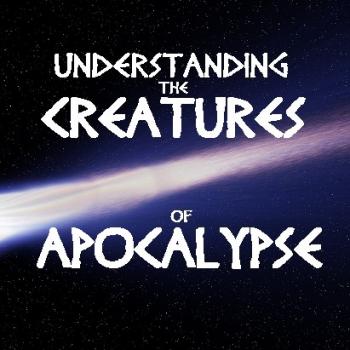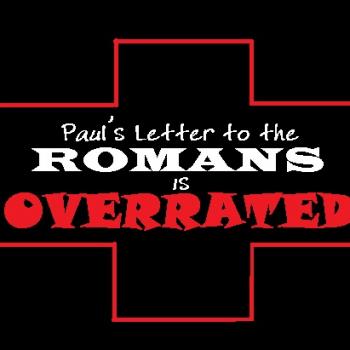
“PICARD,” the latest Star Trek offering, is great, but it offers us an opportunity to look at our own expectations.
I really like “STAR TREK: PICARD.” It’s good!—if you are going to give me old, give it to me old, but also give me the old new. Whatever you do, please don’t reheat frozen dinners from 20 years ago, my friends.
I am a demanding customer when it comes to entertainment choices. To me, nothing at the movies or streaming, nothing on cable TV or broadcast, compares with David Lynch’s “TWIN PEAKS.” Nothing. It all falls short of that masterpiece. And the very best things on today besides David Lynch’s magnum opus give deep respect and homage to it, to those greatest 18 hours of narrative entertainment on any medium. Can you tell I’m a Peaks fanatic?
https://youtu.be/vlECLI34eCg
Suffice to say that I didn’t have my expectations set too high with the newest Trek outing. This turned out great, because low expectations mixed together with the surprise of television excellence surely makes for the happy marriage called “delight.”
From the premiere alone it looks like this is what Trek needed. Not another stale 90’s “NEXT GENERATION” rehash disguised as something new (I am talking about VOYAGER and clones). Definitely not the camp of J. J. Abrams STAR DREK, all flash and fluff, bluster and boom. Unlike those lens-flare filled spectacles, something old and good from Trek is presented delightfully new with this CBS-streamer. There is good science fiction drama to “PICARD,” and if it keeps up being wonderful, it may very well be the savior to the franchise, or at least one helluva swansong. Seriously, if you haven’t already, give it a chance.
But “PICARD” Upsets Folks
What’s that, the malcontents say? “No way!” Enough with the SJW nonsense! I don’t want to be preached at about Trump and Brexit, about how women and migrants deserve better! My childhood is destroyed!”
Okay. Well “PICARD” isn’t what I’d call “preachy,” but you will find some challenges we Americans need in it, frankly. If you are one of these upset people, I hope you don’t eat food like how you watch shows! Less sugar, more lean offerings are well-prescribed. Our systems need challenge: better nutritional options, cardio, resistance-training, etc (talking to myself here, folks). We allow the demon Complacency to take over our lives. We should ask our deepest self: “What are you really upset about, anyway?” I mean, it’s not like Democracy just went down the drain, right?
But beyond the Storm-troopers of Orthodoxy stomping about Nerdom (bigots, misogynists, and gun-nuts, O my!) upset about “message” deviating from their fragile, snowflake truths, I can sympathize with others who, more reasonably, are protective about their faves.
I would be a liar if I didn’t admit that sometimes even I get upset with my own entertainment options, especially if it is a treasured film or series. For instance, I do expect more science out of my science fiction. I love both “STAR WARS” and “STAR TREK”—please, never refer to “STAR WARS” as science fiction. It is fantasy and myth. TREK, however, is science fiction, and tries better than most to keep close to real science… tries, but often fails. Should I get upset about that? It’s just a TV show, right?
The Exploding Star of “Picard”
There are moments where you “should really just relax.” For instance, take the now momentous Supernova-event in the TREK saga which brought havoc to the Romulan Star Empire (and has been moving plots since it got introduced back in 2009). Supernovas are the greatest explosions humans know of. Their light can outshine even their host galaxy and can be seen across the universe. They are the death of gigantic stars.
The fictional race called “Romulans” are important for STAR TREK. They figure prominently in the last adventures of the “NEXT GENERATION” era (occurring in the ca. 2370 and 80s). I refer to the Reman Affair with the villainous Praetor Shinzon (Tom Hardy) that ends in the sacrifice of Data (Brent Spiner). These events take place in 2379, in the film “STAR TREK: NEMESIS.”
Romulans stay important following “NEMESIS” up till “PICARD.” The subsequent and aforementioned Romulan supernova happens soon after, together with the massive relocation efforts of doomed worlds impacted by the explosion, a rescue effort spearheaded by Admiral Jean Luc Picard (Patrick Stewart) in 2387. And (sigh) we must also mention the desperate efforts of Ambassador Spock (Leonard Nimoy) and the rogue Romulan miner Nero (Eric Bana) which created an alternative timeline (as seen in those forgettable STAR TREK reboot films, also 2387).
The newest Trek, PICARD, takes place in 2399.
Upset About Picard and Anything Besides
Can we get upset about fictional television and cinematic stellar explosions? I guess we could get upset over anything if we put enough effort into it. But should we?
Consider that in real life, with our current 21st century level astronomy, we observe the distant star Betelgeuse, in the constellation Orion. By the way, that constellation “Orion” is seen this time of year, up above your heads at night in Northern Hemisphere. Biblical Israel thought of the whole constellation to be a giant other-than-human person, a prince of the Hosts of Sky Vault. The Israelite name for this constellation is Michael, as in St. Michael the Archangel (see Revelation 12). When you look up and see Orion tonight, remember St. Michael and how he fights the Seven Headed Dragon (Scorpio-Libra).
Of course we are of a different consensus reality than our biblical ancestors in the faith. We don’t see sky vaults when we look up. We see space, the final frontier. Up there in the constellation known as “Orion” and “Michael” by various ancient Mediterranean sky lore, you can see the star Betelgeuse. It is one of those nighttime stars visible to the naked eye. Funny thing about Betelgeuse—it grows dimmer and dimmer nightly. Things aren’t too happy it seems.
Betelgeuse’s Days are Numbered
When we look at this star through our telescopes or with our unaided eyes we see how it appeared in the year 1377 CE. This is because Betelgeuse is 642.5 light years away and it has taken its light 642.5 years to reach us now (some sources say 700 light years distant, so forgive me if I am off). It is a red supergiant star, possibly 20 times more massive than our sun, and slightly less than double its age. Sometime between tomorrow or 100,000 years from now, it will go supernova. Whenever that does happen, we won’t get to see it happen for 642.5 years. Who knows? Maybe it already has gone supernova.
When it does happen, people on earth will definitely remember it. It will be visible during day time! And at night it will light up the sky. But besides a brief and spectacular light show, nothing else will happen to the earth because of it. Our biosphere will remain unaffected. It is too far away to significantly impact us, much less injure us. Its display will be short lived.
From Betelgeuse to “Picard”
In STAR TREK (according to one source) at some point, the United Federation of Planets is roughly four hundred light years across. Vulcan, a Federation founding member world, orbits 40 Eridani A at roughly 16 light years distant from our own solar system. Other founding Federation members, the homeworlds of the Andorians and Tellarites, are likewise close to our solar system. The Klingon Empire is only 100 light years from earth, located in the constellations of Leo and Gemini.
It turns out that the Klingons are not the closest enemies to the Federation. That prize goes to the Romulans. The Neutral Zone between Federation space and the Romulan border is only about 30 light years away! This makes sense as the Romulans are an offshoot from the Vulcan race (they would be expected to be close by) and they represent the Federation’s oldest enemy. The Romulan Star Empire is about 100 light years at its widest point. To look in the direction of the Romulans, you would have to be in the Southern Hemisphere and look towards the constellation Centaurus (also, partly featured in the book of Revelation, 9:1-12).
Now think about the massively cataclysmic and destructive effects caused by a supernova. Modern scientific estimates claim that the maximum safe distance for our earth to be from a supernova, should one happen nearby us, would be 50 to 100 lightyears away. So, given that Romulus’s sun went supernova (or was that the Hobus star? Or stars? Or was Hobus the star which Romulus orbited?), this could prove disastrous to many Federation worlds in the centuries following the blast.
Why not right away? Because remember, it takes time to hit, right? And the blast can’t go faster than lightspeed. A light year is the distance it takes light to travel in one year, and stars are light years distant from one another. The unimaginably powerful blasts produced by supernovas are still traveling under Newtonian physics (spreading outwards), and not at superluminal velocities like a hypothetical warp drive (how the Enterprise zips around making Trek stories possible).
The Supernova Problem
Here’s the thing. The ancestors to the Romulans left Vulcan thousands of years ago. Obviously their science and technology was, even in those ancient times, superior to our current levels on earth in 2020. So I have a question for you: how stupid and reckless would those proto-Romulans have to be to settle and establish a civilization on a world orbiting a dying star? Mind you, stellar life is looooooong, as in billions of years, and even if Romulans settled nearby “Hobus” 5,000 years ago, that star was already in its “last days” and the settlers would know it.
So much more advanced scientifically than us, the proto-Romulans would know the death of that star was coming better than we do about Betelgeuse. Before they had even left Vulcan they would have known that Hobus was going to blow up, and soon. So would we here on earth! Indeed we earthlings (Terrans) should be able to see it today. We would know it was going to die soon. We could know that in 2020, decades before Zefram Cochrane will build and fly his first warp ship, and before our First Contact experience with the Vulcans.
“Picard” Nonsense? Or My Own?
Now consider one of the many things about “PICARD” that makes no sense. Sometime around 2385 someone, either a Romulan, or maybe Ambassador Spock, or someone else suddenly had a revelation about the star. O no! The Romulans are DOOMED! Their star is about to go supernova!
By now you should see why this is crazy. Even by our primitive astronomy we can tell the death stages of stars. So the Romulans, the Klingons, all Federation member worlds, and many other galactic civilizations, would know about what was going to happen looooooooong before it did.
Now forgive this drawn out song and dance. I could do this for about sixty to seventy other “STAR TREK” credibility dilemmas. For instance, I could moan about how it doesn’t make sense that since it should have taken the crew on the show “VOYAGER” 70+ years to go from one end of the Milky Way to the other, it is ridiculous in STAR TREK V, with inferior technology, for Kirk and friends go half the distance in less than a day. Besides that, even back in the 1900s, we knew what was at the center of our galaxy. It’s not a planet, William Shatner, but a super-massive black hole named Sagittarius A*.
Other “Big” Problems
Or we could talk about how absurd it is on “DEEP SPACE NINE” or “THE NEXT GENERATION” to see huge space battles with dozens of star ships blowing up in close proximity to one another. Did we forget what “STAR TREK THE MOTION PICTURE” said what happens when such a star ship destabilizes its magnetic containment of the TONS of antimatter it holds?
The destructive force of such annihilation could take out even the V’GER cloud at 1.2271e10×1010 kilometers (or 0.001 light years) in diameter! That would be true of every exploding Klingon battle cruiser and Romulan warbird as well seen in all the hours of Trek.
https://youtu.be/PCrrqtqehg8
Say the Enterprise is fighting a Borg Cube along with a fleet of other ships in near Earth orbit. Uh-oh! Warp core breach! Not only wave goodbye to the Borg and the fleet, say adios to Planet Earth, at least its biosphere, as Enterprise turns into a miniature sun!
Returning to My Senses
And there are many other things I could bring up as well and complain about, split hairs over, shake my head at. But time is short, and life is brief. And it’s just a TV show! The word science is little and the word fiction, is BIG. And hey, that’s good!
It’s at times like these where I repeat to myself the great line of wisdom from the opening song of “MYSTERY SCIENCE THEATER 3000”:
“If you’re wondering how he eats & breathes,
And other science facts,
Then repeat to yourself it’s just a show,
I should really just relax…”
Many religious fanboys and fangirls today can’t seem to do that. They can’t seem to relax when it comes to MARVEL, or DC, or STAR WARS, or GAME OF THRONES, or any other nerd-fest. God only knows how we cope with those really important things. But what do you expect from fellow dying inmates?
Anyway, happy watching. Take it easy with each other, and with yourselves.
https://youtu.be/kddpZRksbEs












